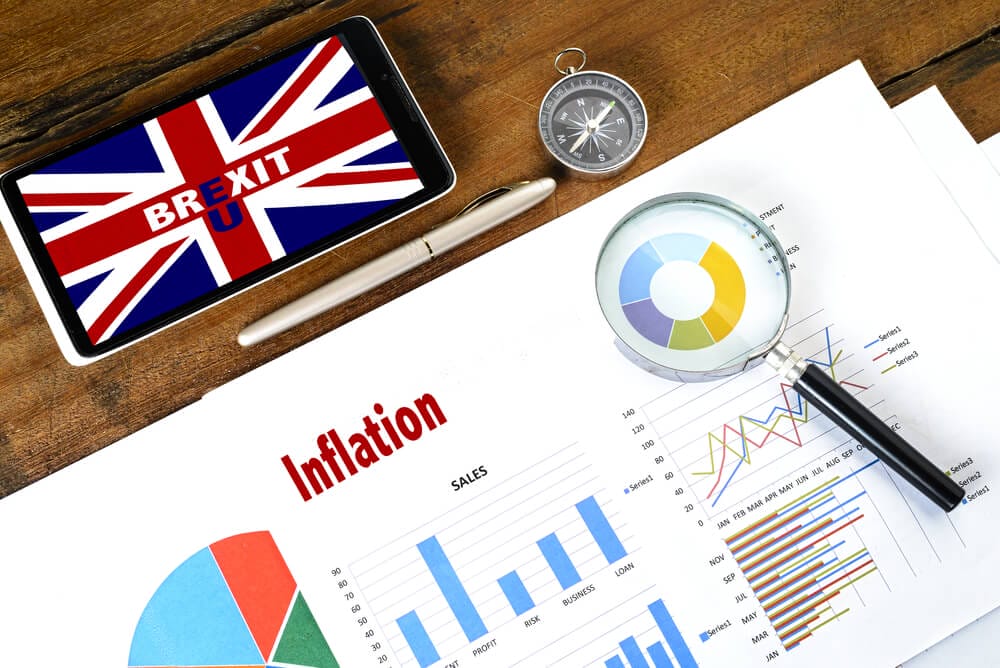Trading GBP/USD is like walking a tightrope during a windstorm. One misstep, and you’re spiraling. Why? Because this currency pair is tugged around by two economic giants — the Bank of England (BoE) and the Federal Reserve (Fed). Each move they make sends shockwaves through the forex market, often catching traders off guard.

If you’ve ever felt like GBP/USD has a mind of its own, don’t worry — you’re not alone. But here’s the deal: understanding how these central banks work is like getting your hands on the cheat codes to the game. Let’s break it down in plain English — no fancy jargon, just real talk.
The Role of Central Banks in Forex: Why Should You Even Care?
The BoE and Fed are not just sitting in air-conditioned rooms twiddling their thumbs. They pull the strings of monetary policy, control interest rates, and influence inflation. For GBP/USD, they’re like heavyweight boxers in the ring — every punch (or policy decision) swings the market.
When they raise interest rates, it usually strengthens their currency. Why? Because higher interest means more investors park their money there. Lower rates? Well, that’s a different story — it signals a weak economy, scaring off investors.
The battle between the pound and the dollar often boils down to which central bank is more aggressive or more cautious. If the Fed hikes rates but the BoE stays put, you can bet the dollar will flex its muscles.
Interest Rate Decisions: The Heartbeat of GBP/USD
Interest rates are the heartbeat of forex. When they rise, it’s like giving steroids to the currency. The Fed and BoE use this tool to tame inflation or boost growth, but it always affects GBP/USD traders.
The Fed’s rate hikes, especially post-pandemic, made the dollar the king of the hill. Meanwhile, the BoE played catch-up, often causing the pound to lag. The imbalance created wild swings — and probably a few headaches for you too.
But it’s not just about the rate change. It’s the tone — the whispers, the hints. If Powell or Bailey even suggest a future rate move, the market moves before the ink dries.
Inflation Levels: The Silent Currency Killer
Inflation isn’t just a problem at the grocery store. It’s a currency killer. Both the BoE and Fed monitor inflation like hawks. If inflation rises, they panic — and for good reason.
Let’s say UK inflation surges. The BoE might raise rates, pushing the pound up. But if the Fed is already hiking faster, the dollar still wins. It’s a race, and whoever controls inflation better usually has the stronger currency.

The problem? Inflation isn’t easy to tame. And while they try to control it, traders are left navigating a storm of volatility. Been there, felt that pain, right?
Employment Data: The Fed’s Secret Weapon
The U.S. job market is the Fed’s favorite excuse to hike rates. Strong employment means a strong economy, which justifies tighter policies. Every first Friday of the month, Non-Farm Payroll (NFP) data is dropped — and chaos follows.
If the U.S. reports more jobs than expected, the dollar takes off like a rocket. GBP/USD tanks. It’s brutal if you’re on the wrong side of that move. On the flip side, weak employment can spook the Fed, weakening the dollar.
In the UK, employment data matters too, but the BoE isn’t as obsessed with it. That imbalance creates an edge — and sometimes, a trap — for traders.
Economic Growth (GDP): A Tug of War
Imagine two cars in a drag race. One is the U.S. economy, the other is the UK’s. The faster car pulls the GBP/USD pair in its direction. GDP growth figures show who’s leading the race.
If the U.S. economy is booming and the UK is crawling, the pound doesn’t stand a chance. The Fed gets more aggressive, and traders dump the pound like it’s a hot potato.
However, if the UK shows surprise growth, it can shock the market and lift the pound — especially if expectations were low. But remember, surprises are rare. Hope isn’t a strategy.
Political Chaos: The Pound’s Worst Enemy
Let’s face it — UK politics have been a circus lately. From Brexit to revolving door prime ministers, political instability drags the pound down. Markets hate uncertainty, and GBP/USD reflects that anxiety.
Compare that to the U.S., where despite political drama, the dollar usually holds up. Why? Because it’s still the world’s reserve currency — a safe haven. So when the UK stumbles politically, GBP/USD feels the sting.
And no, elections don’t bring relief — they bring fear. Traders hate not knowing what’s next. That fear gets priced into GBP/USD fast.
Monetary Policy Statements: The Hidden Traps

Ever read a central bank’s policy statement and felt dumber afterward? You’re not alone. They’re full of vague phrases and double-speak. But hidden in those words are clues.
If the Fed says it’s “data dependent,” that’s code for “we’ll hike again soon.” If the BoE says the economy is “fragile,” expect a dovish stance. The market reads between the lines, and GBP/USD reacts in seconds.
Traders who don’t pay attention to tone and language get blindsided. You can’t just read the headlines — you’ve got to read the mood.
Forward Guidance: Words That Move Markets
Forward guidance is like a weather forecast — sometimes right, often wrong, but always influential. If BoE hints at rate cuts, the pound starts sinking before anything actually happens.
Same with the Fed. Just one sentence about “prolonged inflation” can send the dollar soaring. These hints often matter more than the actual decision later on.
And guess what? These hints are often leaked or twisted by the media. So if you’re not listening to the actual speech, you’re trading on half-truths. Dangerous game.
Currency Interventions: The Rare but Violent Moves
Most traders forget this one — until it slaps them in the face. Central banks can step in directly and manipulate their currencies. It’s rare, but when it happens, GBP/USD can move violently.
If the BoE or Fed thinks their currency is too weak or too strong, they can act. Sometimes it’s open, sometimes it’s sneaky. But the result? Pure chaos. No warning. Just a massive candle blowing up your stop-loss.
Don’t say you weren’t warned.
Market Sentiment: Emotion Over Logic
Sometimes, GBP/USD doesn’t care about data. It moves on emotion. Traders panic, celebrate, or follow the herd. Sentiment is like the mood of the market — and moods change fast.
If traders think the Fed will raise rates, the dollar moves even if no one at the Fed says a word. Rumors, headlines, or even tweets can send GBP/USD spinning.
Trading against sentiment is like swimming upstream in a river. Possible? Yes. Smart? Usually not.
Safe Haven Status of the Dollar
During global turmoil, the dollar becomes a safety net. War? Economic collapse? Recession fears? Everyone runs to the dollar like it’s the last lifeboat on the Titanic.

The pound doesn’t have that privilege. So when things go wrong globally, GBP/USD drops — not because of the UK, but because the world trusts the dollar more.
Sad but true.
Timing: When BoE and Fed Speak
Timing is everything. The BoE and Fed don’t always move in sync. Sometimes the Fed leads; other times, the BoE surprises. This mismatch causes sharp GBP/USD moves.
Let’s say the Fed just hiked rates, and a week later the BoE sounds dovish. That delay compounds the move, exaggerating the difference. Understanding this timing can help you catch big swings.
But misreading it? That’ll cost you more than just money — it’ll cost your confidence too.
Conclusion: It’s a Battlefield Out There
Trading GBP/USD isn’t for the faint-hearted. It’s not just about charts or indicators — it’s about understanding the power play between the Bank of England and the Federal Reserve. Their every move, word, and even silence shakes the market.
If you ignore their influence, you’re basically flying blind in a storm. But if you take time to understand their mindset, you’ll start to see patterns — and profits — where others see chaos.
Don’t just follow the noise. Follow the central banks. That’s where the real story begins.
FAQs
1. Why does GBP/USD react so violently to interest rate changes?
Because interest rates affect currency demand. Higher rates attract investors, moving money and spiking volatility.
2. Is the Fed more powerful than the Bank of England?
Yes, in terms of global impact. The U.S. dollar is the world’s reserve currency, so Fed decisions ripple further.
3. Can political news in the UK really impact GBP/USD that much?
Absolutely. Uncertainty from UK politics causes fear, and fear makes the pound drop like a stone.
4. How often should I check central bank statements?
Always around meetings, but also keep an eye on speeches, minutes, and reports — surprises can hit anytime.
5. Is GBP/USD too risky for beginners?
It can be brutal if you’re unprepared. But with proper knowledge of BoE and Fed influence, it becomes manageable — even profitable.
